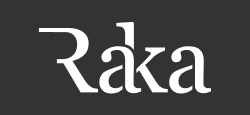Last week, Google made one of those major announcements-that-isn’t-an-announcement when they declared they’re rebranding all Google advertising platforms under the Google Ads umbrella. It was such a non-announcement that even their email to account owners said that nothing’s changing, except the URLs you use to access the platform. That means adwords.google.com is changing to ads.google.com, for example.
Additionally, Google will be re-branding its enterprise products (including DoubleClick and Google Analytics 360) under the Google Marketing Platform umbrella and will unify its DoubleClick for Publishers and DoubleClick Ad Exchange platforms into a single platform called Google Ad Manager.
What does it mean for businesses?
If the announcement isn’t notable for what it says, it’s notable for what it means. With Google Ads, Google is no longer looking at its ad offerings as separate entities, and neither should marketers. Search, Display, Video, Shopping, Apps, Maps, Gmail and partner advertising should be looked at as part of a cohesive marketing strategy, rather than as individual line items in a budget with their own separate goals.
Buried a few paragraphs down in the release notes is some great news for small businesses: Smart campaigns will now be the default campaign in the new Google Ads. With Smart campaigns, Google promises that small businesses can set up ads in virtually no time, with Google following up to determine how the ads are performing, and making optimizations based upon feedback from the account manager. Having Google directly taking a hands-on approach to your account should make your life easier if you’re working with a small budget.
How does this change impact marketers?
In addition to lowering the barrier to entry for digital advertising, it also underscores Google’s commitment to helping create more opportunities for businesses to succeed with ads. While Smart campaigns will largely automate the ad creation process, the opportunity to create manual campaigns to serve specific purposes remains very much in play, although these types of campaigns may require greater oversight to be successful.
The bigger picture impact is a strategic one. As marketers, you should follow Google’s lead and embrace opportunities to reach your audience wherever they go. At Raka, we encourage all of our clients to use all available ad assets to their advantage, but we don’t see nearly enough brands taking advantage of the opportunity to target their users on YouTube or Gmail. Many display campaigns don’t take advantage of the ability to program ads in HTML5 to increase engagement either, and now is the time to start.
If you’d like to learn more about how you can take advantage of Google ads and Smart campaigns, or discuss how we can help your brand get started with HTML5, YouTube, Gmail ads, or digital advertising in general, contact us today!


